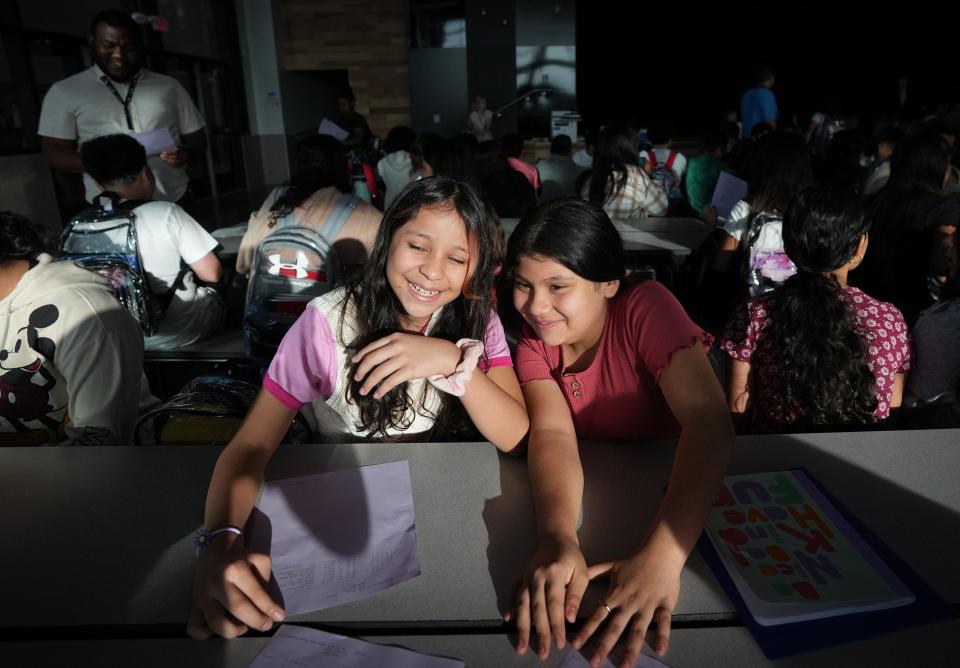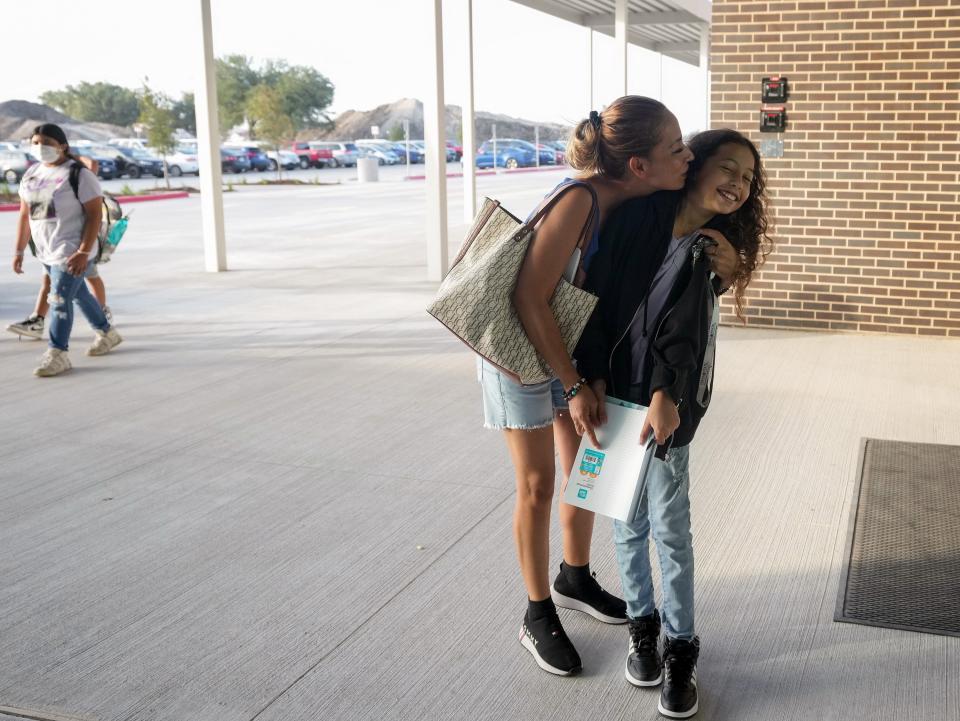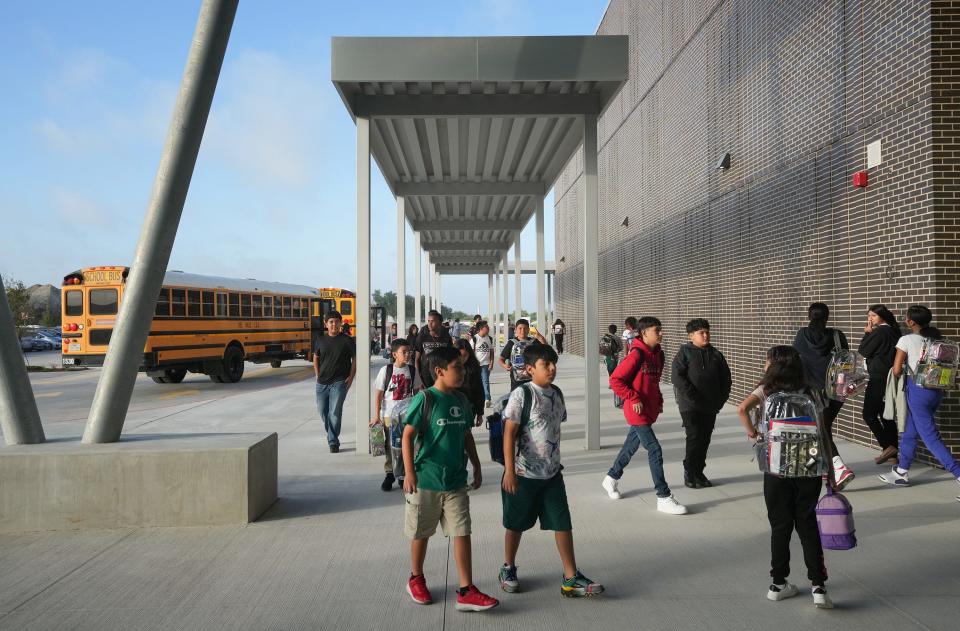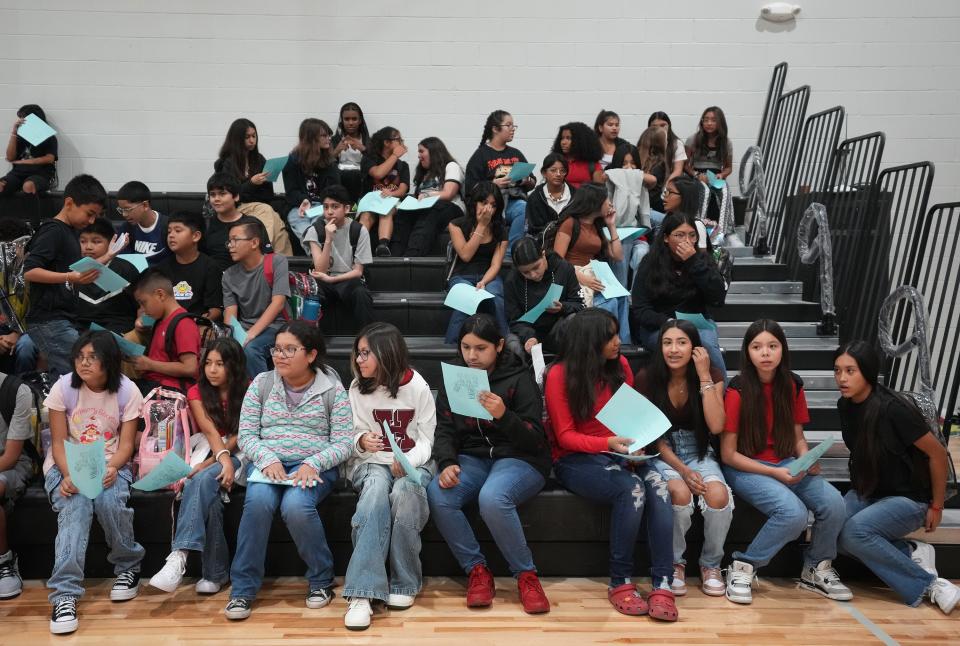As AISD student enrollment declines, suburbs see growth. Here's what we know.
As Del Valle Middle School students returned to school for the first day of class Wednesday, they chatted with friends or pored over their schedules.
For eighth grader Taraji Gratten-Crowder, 13, the beginning of the school year is exciting.
“I’m feeling nervous but happy at the same time,” she said. “I’m glad to be back with my friends.”
She’ll be taking all honors classes this year, she said, beaming. She’s getting better at math, but she’s most looking forward to reading and writing this year, she said.
For all students, the middle school is new, one of the projects from the 2019 bond referendum. The school is one way the district is working to address growth. Administrators expect enrollment to balloon from about 11,000 students in 2020 to roughly 17,000 by 2031, according to district data.

While school districts around Austin are racing to keep pace with the students pouring through their doors, the Austin district's enrollment continues to decline as affordability and competition with other public schools drives students away.
Many districts saw their growth trajectories disrupted during the pandemic, Round Rock district Superintendent Hafedh Azaiez said.
Now the numbers are starting to inch back up, but Round Rock is seeing steady increases in students, rather than exponential growth, he said.
The district, with about 47,000 students, has grown only slightly in the past decade, compared with 30% growth between 2003 and 2013, according to Texas Education Agency data.
“I think they're being very cautious and cautiously optimistic,” Azaiez said. “For us in Round Rock, for the past two years, our property values went up by a lot. It's becoming harder and harder for a young couple with kids to move into the area.”
More: How Austin suburbs went from one-school towns to booming districts
Austin district officials understand that all too well. Between 2011 and 2022, Austin’s enrollment went down almost 14%, from 86,528 to 74,602 students, according to TEA data.
Most of the losses have happened in the city’s eastern swath and among Hispanic and Black children, said Katie Casstevens, executive director of student enrollment and attendance.
“Housing prices have tripled,” Casstevens said. “The dynamics of the city are changing rapidly.”

Once families have more than one child, many are interested in finding a home with more space that’s within their budget, which often means moving outside the Austin district’s boundaries, she said.
While the number of students in the Austin district is dropping, the numbers of children in Austin and Travis County are continuing to climb, according to data from the U.S. Census Bureau and the city of Austin.
The numbers of Black children and the youngest Hispanic children in Austin have declined, but the number of school-age Hispanic children has increased, said Lila Valencia, the city of Austin's demographer.
“We are seeing growth in the child population overall, and we're particularly seeing it among families who can be resilient, who have the economic resilience to withstand economic downturns, things that are more volatile like housing prices,” Valencia said.
That’s not true of all families, of course, she said, and high costs of living are driving out many of them.
“It's affecting really young families, families of young children, because they're the ones maybe moving out,” Valencia said.

A lot of the growth happening in Austin suburbs right now could be attributed to the families that moved to the area 20 years ago, she said. Now those children are grown up, staying in the area and having their own children, she said.
The Austin district is working to encourage more families to keep their students in the district by engaging more directly with families, training school staffers to be better resources and updating the online enrollment system, which can be confusing, Casstevens said.
About 81.4% of the students who attend public schools and live within the district’s boundaries actually go to Austin district schools, a rate that’s remained stable for about four years, Casstevens said.
Those students could also attend a public charter school or transfer into a neighboring traditional school district.
Overall, there are fewer public school children within the Austin district boundaries than there were 10 years ago — 87,351 this year compared with 92,645 in 2012, according to district data.
The Round Rock district is trying to attract students by highlighting its school programs, Azaiez said.
The district is beginning work on a long-range master plan to map out proposals to accommodate continued growth, he said.
Districts’ final enrollment for the 2023-24 school year won’t be finalize until fall, which is typical.

This article originally appeared on Austin American-Statesman: Amid suburban growth, Austin declines among Central Texas districts

